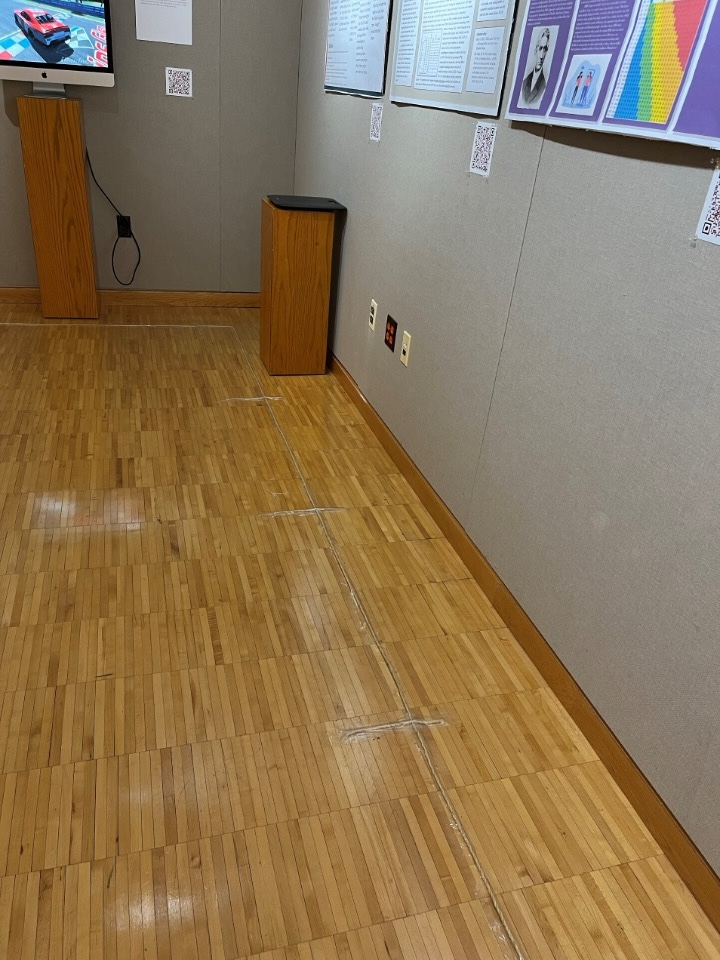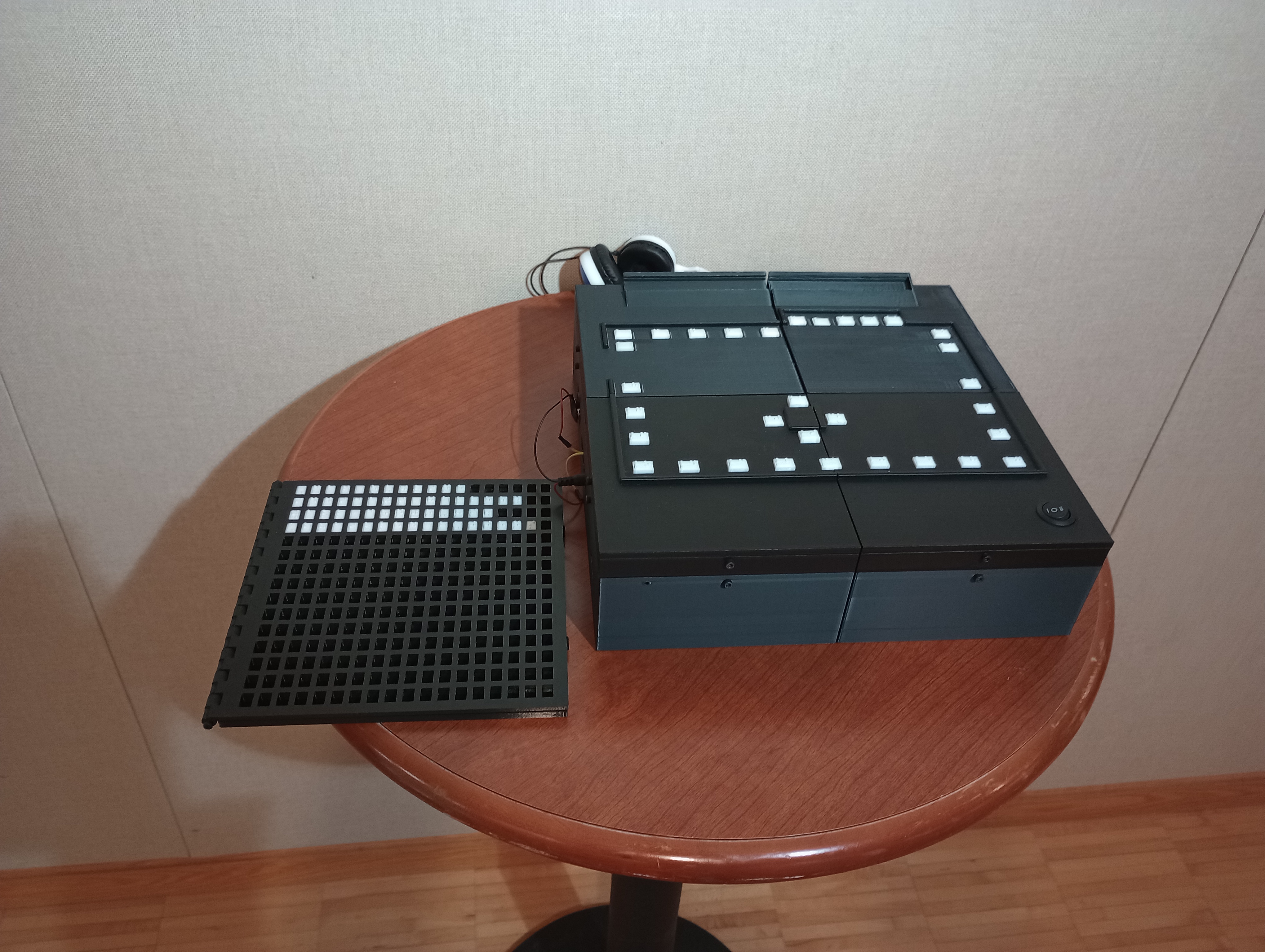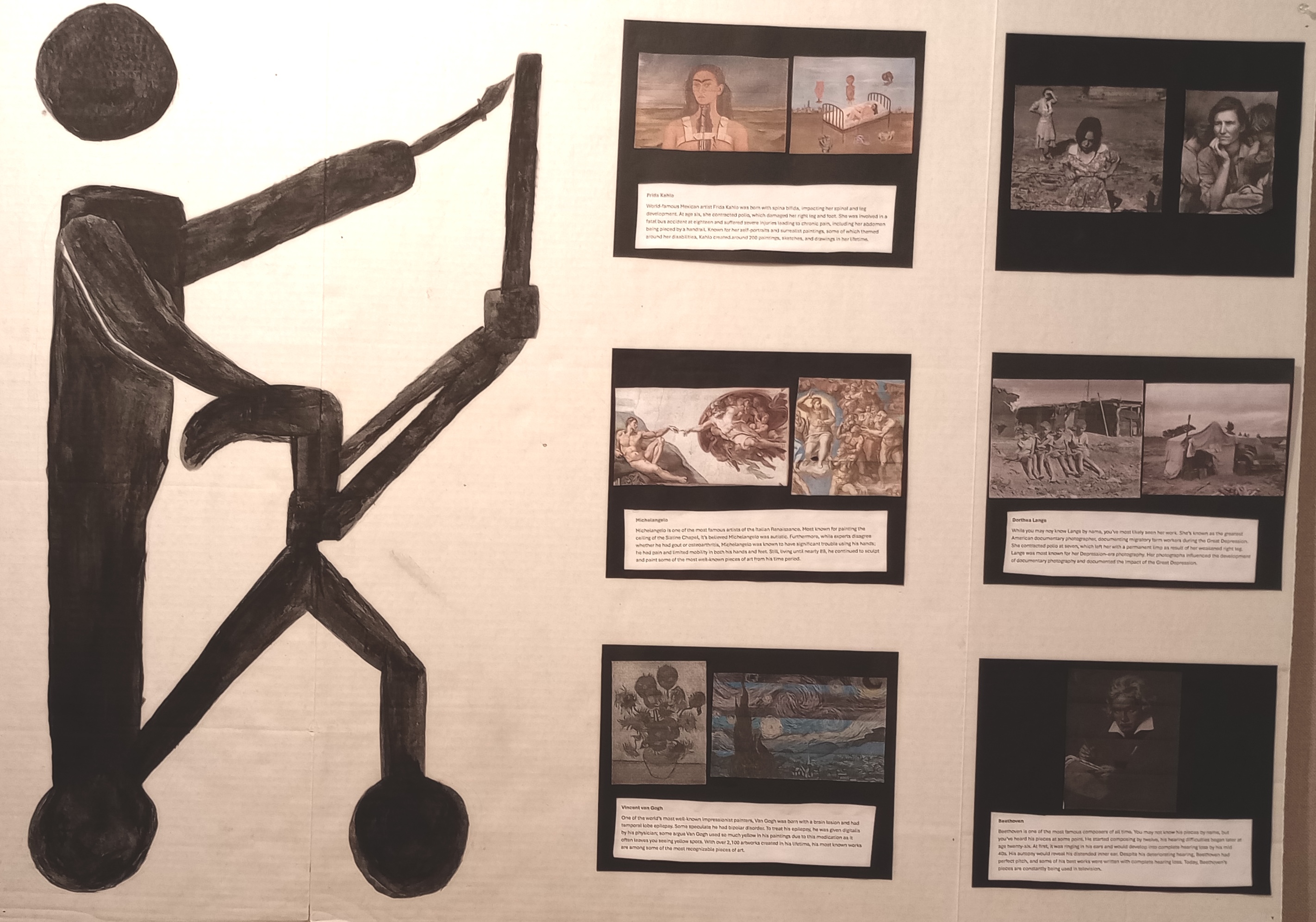CCAVA Accessibility-Enhanced Exhibitions
The CCAVA project has been working in collaboration with SUNY Poly's Gannett Gallery to make our exhibitions accessible to people with all visual abilities. Here is what we've been up to.
Metrics and Measurement + Art and Culture exhibit,
Fall 2023
The Art of Measurement and Measure of Art show featured a floor track to guide people through the exhibition, and alt-text along with artist statements that converted to an audio format and access through QR codes on the wall.

Art-Tech exhibit Spring 2024
The Gannett Gallery hosts a SUNY-wide biennial Art-Tech exhibition. As of Spring 2024, we are including accessibility features to this show, which includes floor tracking and audio access to alt-text and statements. The theme of the Spring 2024 Art-Tech exhibition was Transgression. Contributing artists were asked to create alt-text for their works, and (with uneven participation) audio record it along with their statement. The main new feature in this exhibition is our 1.0 version of our gallery audio-tactile map by Bao Do, shown in the image below. The tactile map allows visitors to get an overview of the gallery before moving on to explore each work.

IDS 220 Creativity and Culture exhibit,
“Hack a Social Problem,” Spring 2025
At the Hack a Social Problem exhibition, members of the IDS 220 Creativity and Culture class presented ideas in the forms of research posters and creative artefacts that aimed to expand the accessibility of learning, communications, and artistic tools and technologies, based on the semester's research, discussions, and workshopping. As part of the class, students were coached in writing alt-text (using Alt Text as Poetry as a source of inspiration).
Exhibition Sample
Famous Works You Didn't Know Were Created by Disabled Artists,by Chloe Raut.
Rhetoric is a powerful tool. It instills narratives so deeply within us we don’t recognize the flaws in them. Society views disabilities as something to overcome, a situation preventing a person from achieving things the way abled people can. Disabilities come with challenges, yes, but working to function in a more “abled way” has never been the solution. At 17 years old, I learned this lesson quickly. Developing a disorder I’m still seeking answers to, I was left with debilitating chronic pain and various health issues that affected my day-to-day life. But that didn’t mean the creator inside of me disappeared. I was still a writer, still an artist, but I had to instill different measures to continue to do so. I must take more breaks to prevent pain and sit when I paint to manage my tachycardia, but I am still creating, much like many disabled artists. Within the AI in art conversation, a new rhetoric emerged: AI makes art accessible to the disabled. In reality, disabled people have been artists for centuries. Art has always been accessible because disabled artists, fueled by their desire to create, make it so. In fact, some of the most well-known, renowned pieces were created by an artist with a disability. This piece depicts some of modern time’s most recognizable art pieces created by artists with disabilities. I have included works by five artists, and have composed both alt-text for the images of their creative works and descriptive captions for each creative work. Each artist’s coverage is about two paragraphs long. To hear these descriptions, please continue to listen to this artist’s statement.

Future plans
Upcoming: 2026 Art-Tech exhibit. Theme: An accessible Future.
Working on improvements:
Improving the floor track: from rope/twine to texturized rubber tracks and floor dots,
using directed speakers for audio components (rather using than headphones).